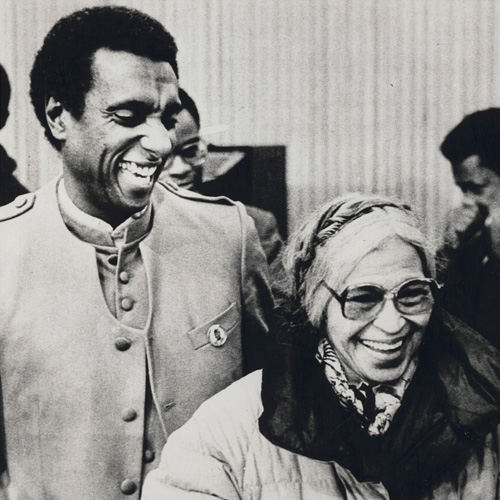Horwitz: Organization is power for change

Courtesy of the Library of Congress
Influential leaders in the civil rights movement, Kwame Ture and Rosa Parks used their words and actions to create change.
November 19, 2021
Last week, I came across a clip of the anti-imperialist, revolutionary and civil rights leader Kwame Ture explaining the relationship between organization and mobilization. According to Ture, mobilization occurs when individuals rally around specific issues. On the other hand, organization is committing oneself to the lifelong work of dismantling unjust systems. Failure to recognize the nuance between mobilization and organization is a key reason why movements in the United States continue to fall short, securing continued violence and suffering through compromise.
The continuing appeal of mobilization is based on a warped understanding of its role in garnering power. Rosa Parks is considered a mobilizer in popular portrayals of her life and role in the civil rights movement. We are taught that Parks was just an ordinary seamstress who got on a bus one evening in Montgomery, Alabama and refused to give up her seat. As the story goes, outrage over her subsequent arrest led to the Montgomery Bus Boycott, resulting in the end of segregation on city busses.
In reality, Park’s refusal to give up her seat was not a one-off moment of frustration from any ordinary woman. Parks served as the secretary for her local chapter of the National Association for the Advancement of Colored People (NAACP). The organization “focused on voter registration, youth outreach, pursuing legal remedies for black victims of white brutality and sexual violence and defending the wrongly accused.” Her role as an active community organizer was one of the reasons that after the incident, another civil rights leader asked Parks for permission to use her arrest as a catalyst for an organized attempt at a bus boycott.
At the heart of successful mobilizations must be the work of organization. While Parks has become the enduring symbol of the protest, it wouldn’t have experienced such success without an organized community ready to respond. Additionally, the Women’s Political Council, led by Jo Ann Gibson Robinson, carried out some of the most important work by spreading leaflets to drum up support for the initial plan of a one-day boycott. Individuals wrote the central demands for the boycott years in advance. The mass of committed individuals who showed up at the Holt Street Baptist Church following the first day of the boycott, and those who carried on by volunteering to run carpools and raise money ensured the actions would continue.
Even after the boycott ended, Parks continued to frequent organizing spaces, where she worked on prisoner support, anti-war campaigns and fought against housing segregation. She was an organizer, committed to a lifelong struggle against racial oppression. Fittingly, when asked about her vast body of impact, Parks replied, “I do what I can.”
It’s important to remember that you can’t dismantle oppressive systems with a single action or in a single day. Not every injustice will be a successful catalyst for change. Yet, it’s easy to get sucked into the urge to simply mobilize around the latest injustice and lose sight of the necessary groundwork. There’s always the essential organizing that must take place behind the scenes to learn, educate, build community and create coalitions. Then, when the time comes, you can be ready to show up again and again, with more people in tow each time until change occurs. Afterwards, the process begins again until the next mobilization.


